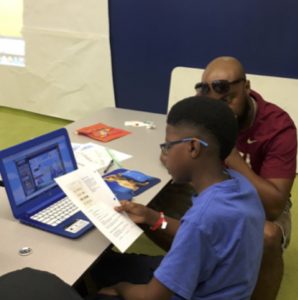I have been working with the brilliant minds in the video game and design industry since my introduction to the Entertainment Technology Center (ETC) at Carnegie Mellon University in 2006. While I am a scientist and tech savvy, I had no idea what the world of augmented reality, gaming, and videos could mean in the age before the iPad, especially to kids who are growing up immersed in the opportunity to not just consume games, but create them. We’ll get back to this in a moment.
At first, I worked with the ETC and the University of Pittsburgh’s UPCLOSE program to create a multiyear spy school for girls in STEM. The program had an underlying theme of augmented reality to it (think a Facebook-like system that “fronts” communication much like Charlie’s phone did for Charlie’s Angels). What was most striking about this gamified camp experience for middle school girls was the premise that they themselves were part of the game narrative. They learned advanced concepts in genetics, environmental quality, and sustainability, and were introduced to coding, robotics, and technology design before the 9th grade. With confidence brimming, the girls went into the next school year with a leg up in science.
Subsequently, I embraced the opportunity to work with the ETC, the International Game Design Association and Schell Games when the National STEM Video Game Challenge arrived on the scene. We were fortunate enough to design a workshop and global game jam for students in the 5th – 8th grade. The workshop was totally booked within a week. In the workshop, led by WQED, we were focused on STEM games created for kindergarteners along with the PBS KIDS challenge. We showcased digital and analog game design, as well as potential careers in STEM fields. It was so exciting to see two young men get so energized about creating their game that they recruited their neighbors. Archers and Aliens, a National STEM Video Game Challenge winner, was born. Even more impressive, the boys continued to develop their game. Their 1.0 version was about “addition” for kids in 1st grade, but they also moved on to 2.0, which was the “subtraction” module. Let’s pause for a moment. These are middle school boys who have created a tool for 1st and 2nd grade students. Kids teaching kids. Peer to peer learning. Engagement. Career opportunities. Imagination.
It was because of this deep relationship with the STEM Challenge that WQED went on to host the 2015 National Winners Event in Pittsburgh, then to film a TV episode for parents about how gaming can help unlock your child’s potential.
When this year’s STEM Challenge began, I knew that I wanted to help bring a workshop to the Glazer Children’s Museum in Tampa, where I am now the President and CEO. Our workshop included regional educators throughout the K-12 spectrum, our community librarians, and kids from 5th to 8th grade

At the Glazer, we are not known for doing work with middle school students at all. Actually, our survey confirmed that most of the workshop participants weren’t coming to our museum. I anticipated this, as our local perception is that the museum is geared towards much younger children. What I didn’t expect was the parents.
Parents decided not to drop off their kids, but rather work with them for three hours on a Saturday afternoon. There were diverse races of parents with kids of varying ages, even some as young as my daughter (who is 9). The parents were fully engaged with their kids. They admitted to loving games, but they weren’t there to satisfy themselves, but rather to elevate their children. They were modding, strategizing, and playing. They legitimized what is so often marginalized: that games can teach and bring families together. This is the highest role of any museum – to help our visitors (no matter how old), rise to their full potential because of something that sparked their imagination when they were with us.

Now, we’re even more excited to partner with the Joan Ganz Cooney Center and the STEM Challenge team on initiatives for early learning and STEM, led by Michael Levine and Lisa Guernsey, both amazing advocates and forward-thinkers in the early childhood sector. We are creating, together, a true set of critical thinkers, STEM-prepared and engaged like no other generation before them. We are using games to invest in our kids’ fullest potential. If you haven’t yet, encourage YOUR child to enter the National STEM Video Game Challenge. By putting what they are imagining about a game onto paper, you give them the opportunity to “play” in the world, with their unique vision paving the way.

Jennifer Stancil is the President and CEO of the Glazer Children’s Museum in Tampa, Florida. Her first love is Atari; she and her family engage in lots of games for learning.


